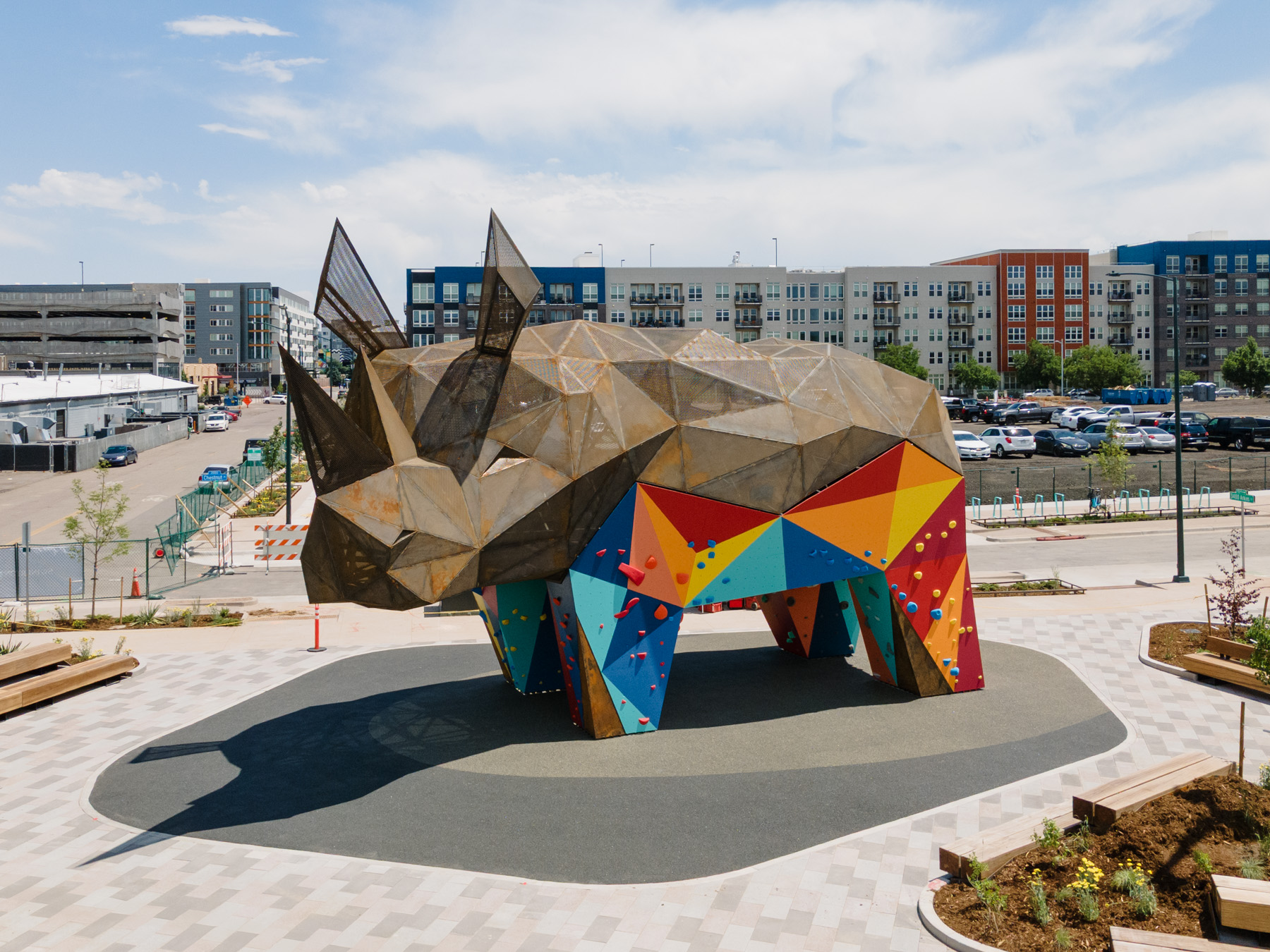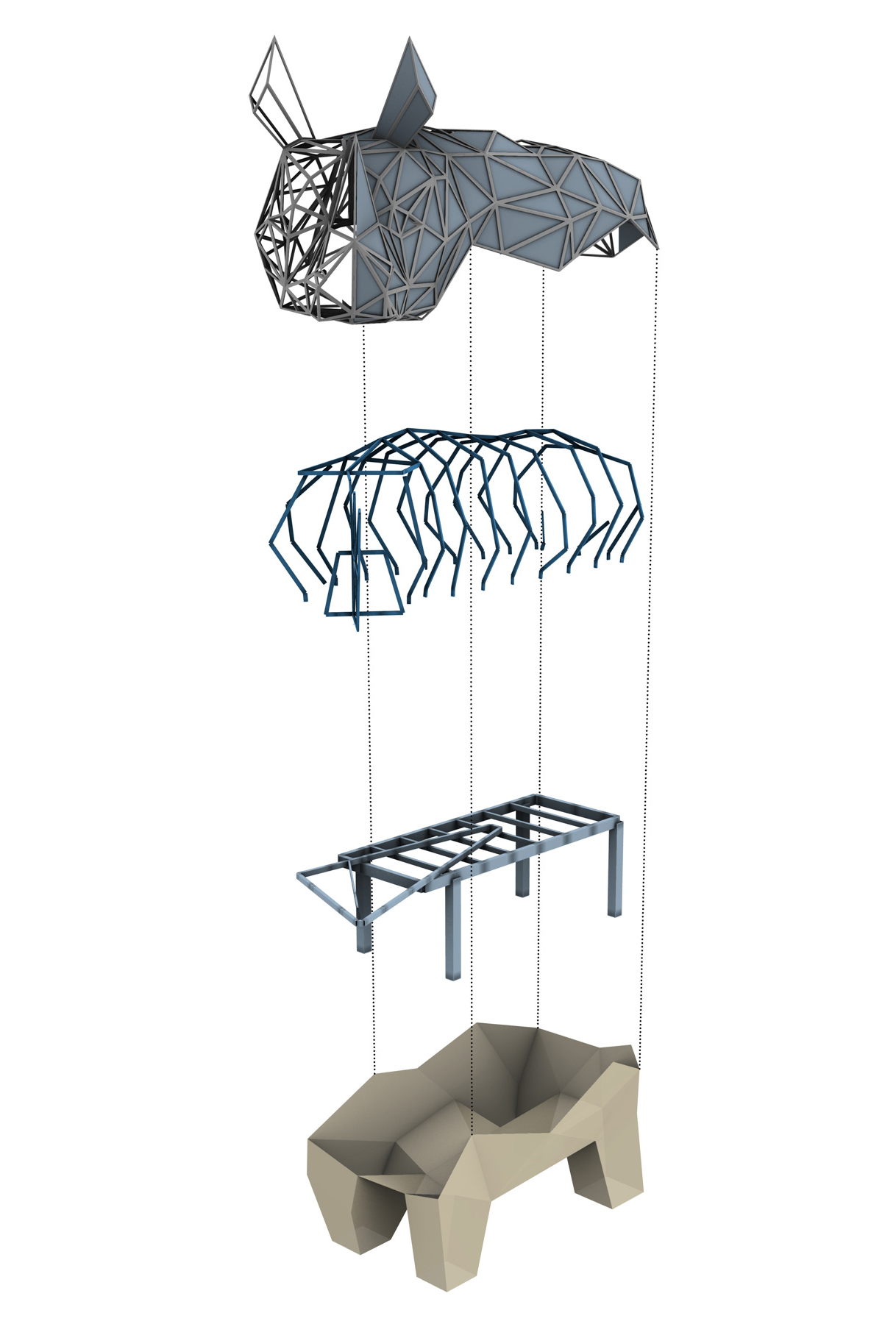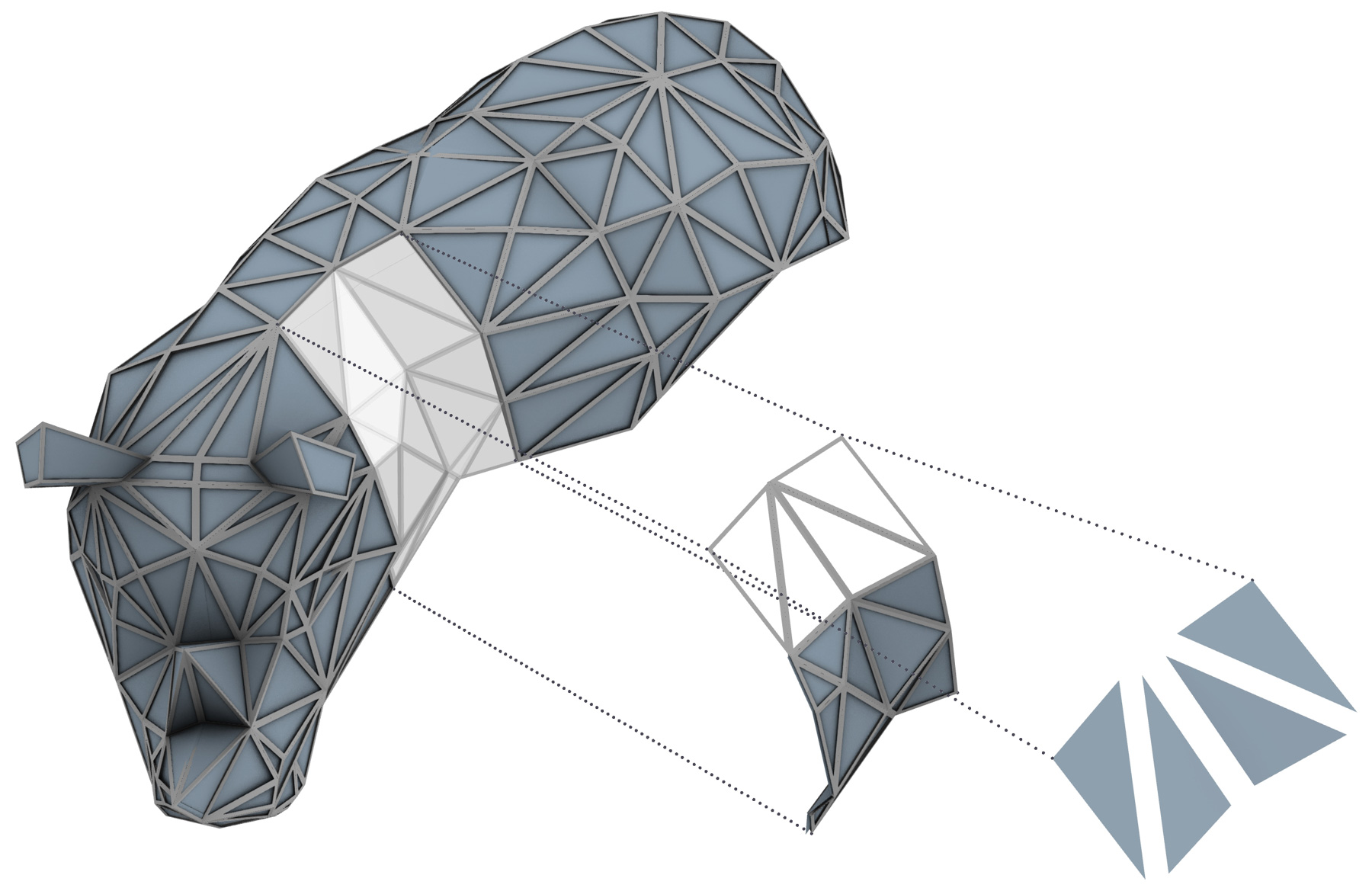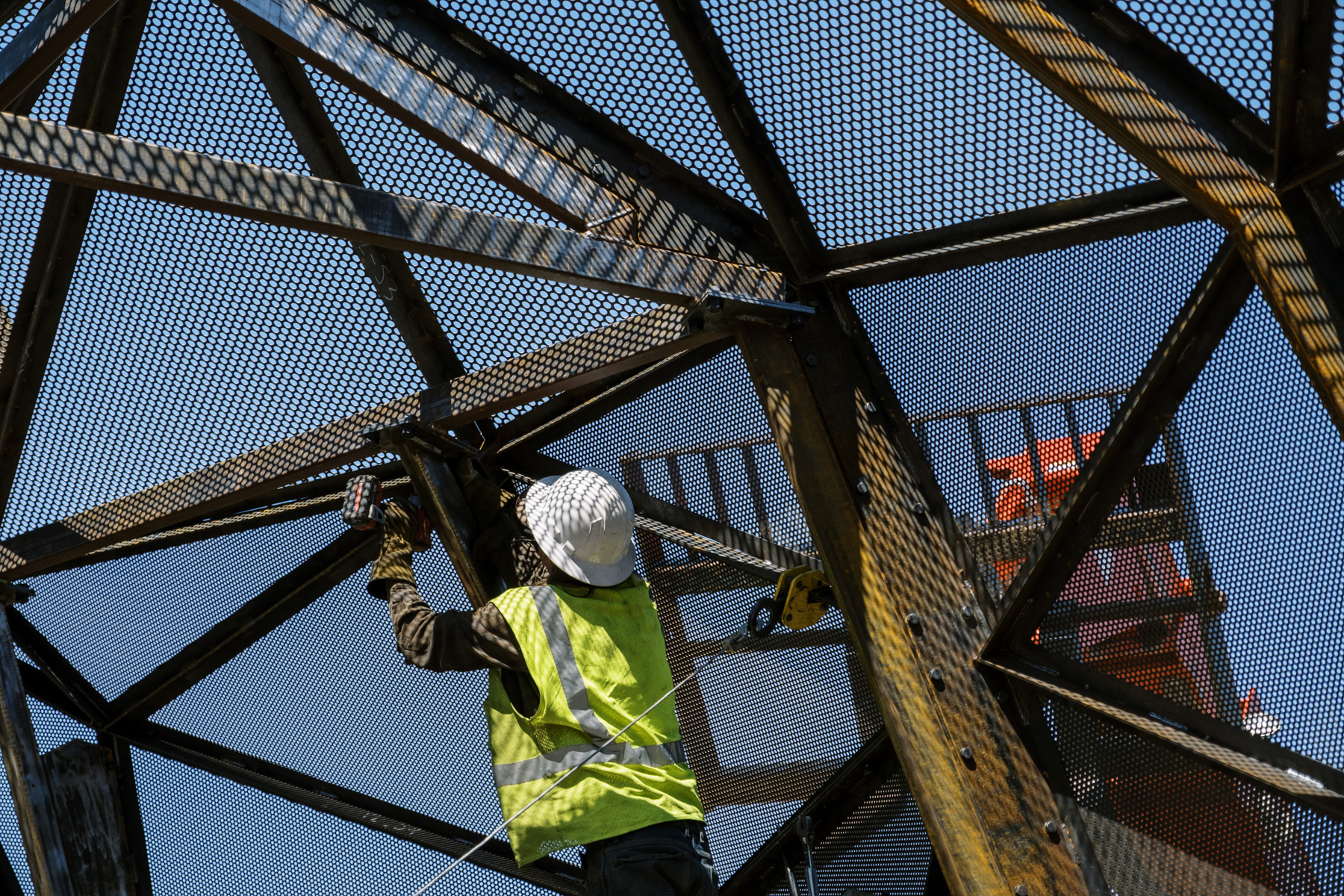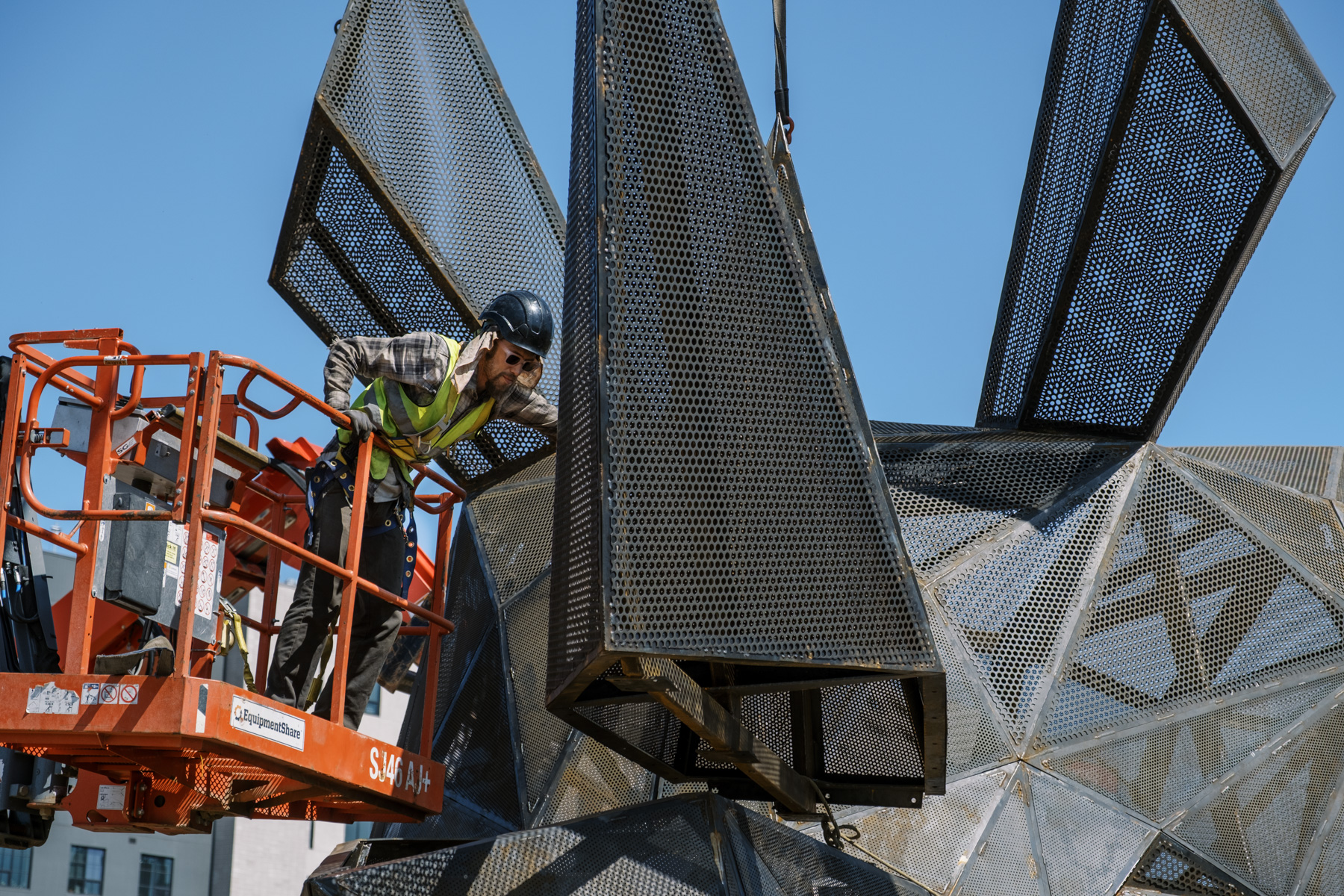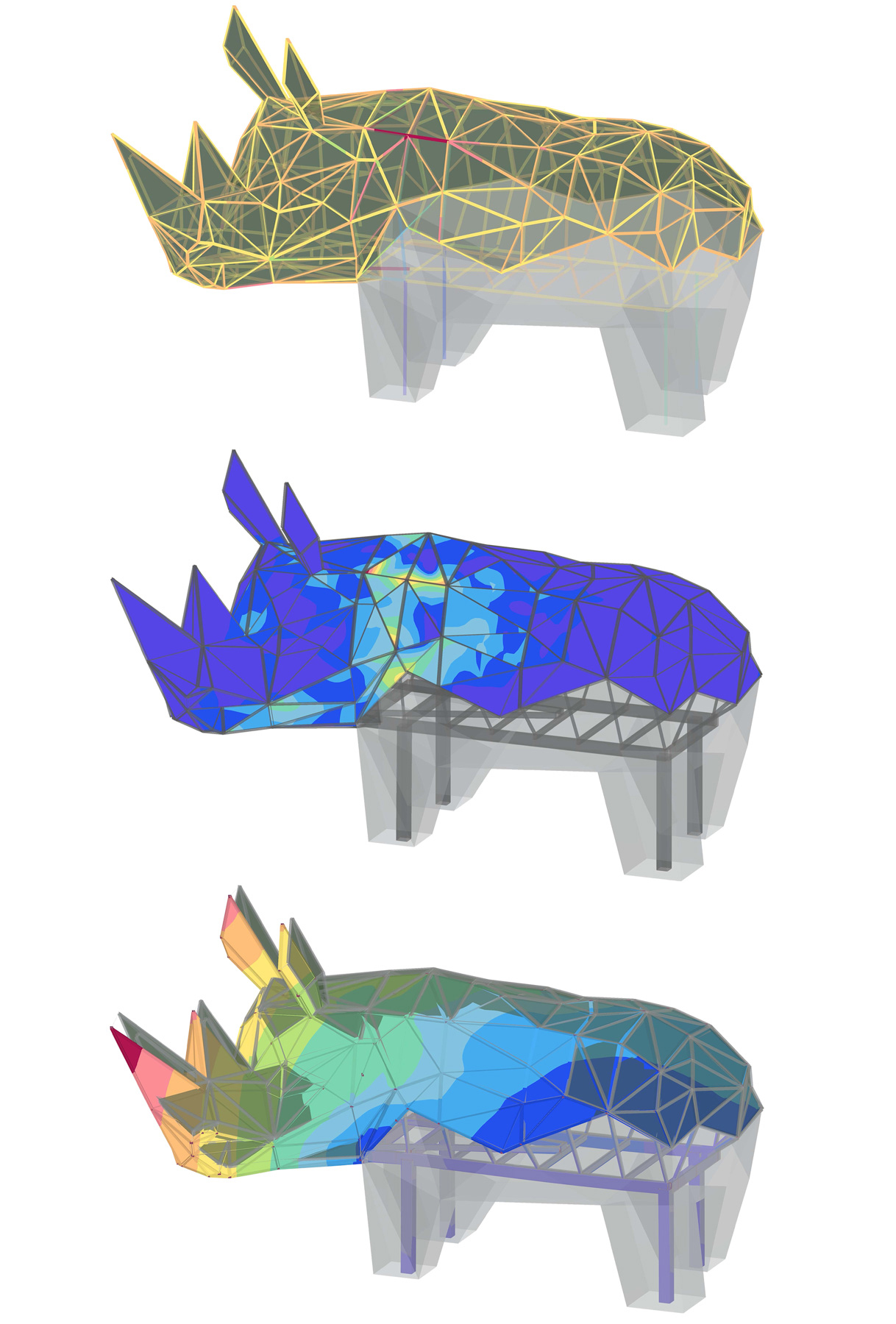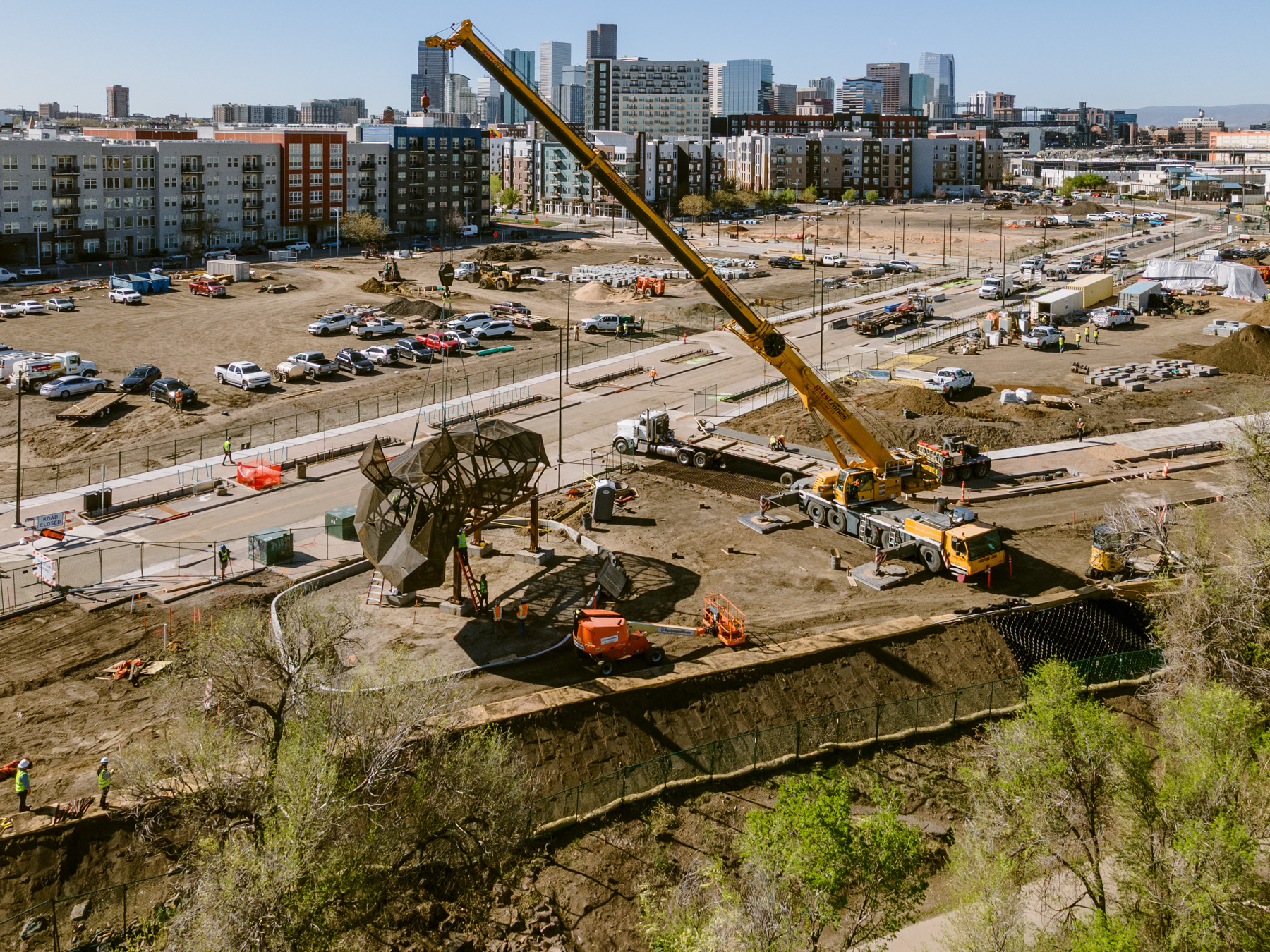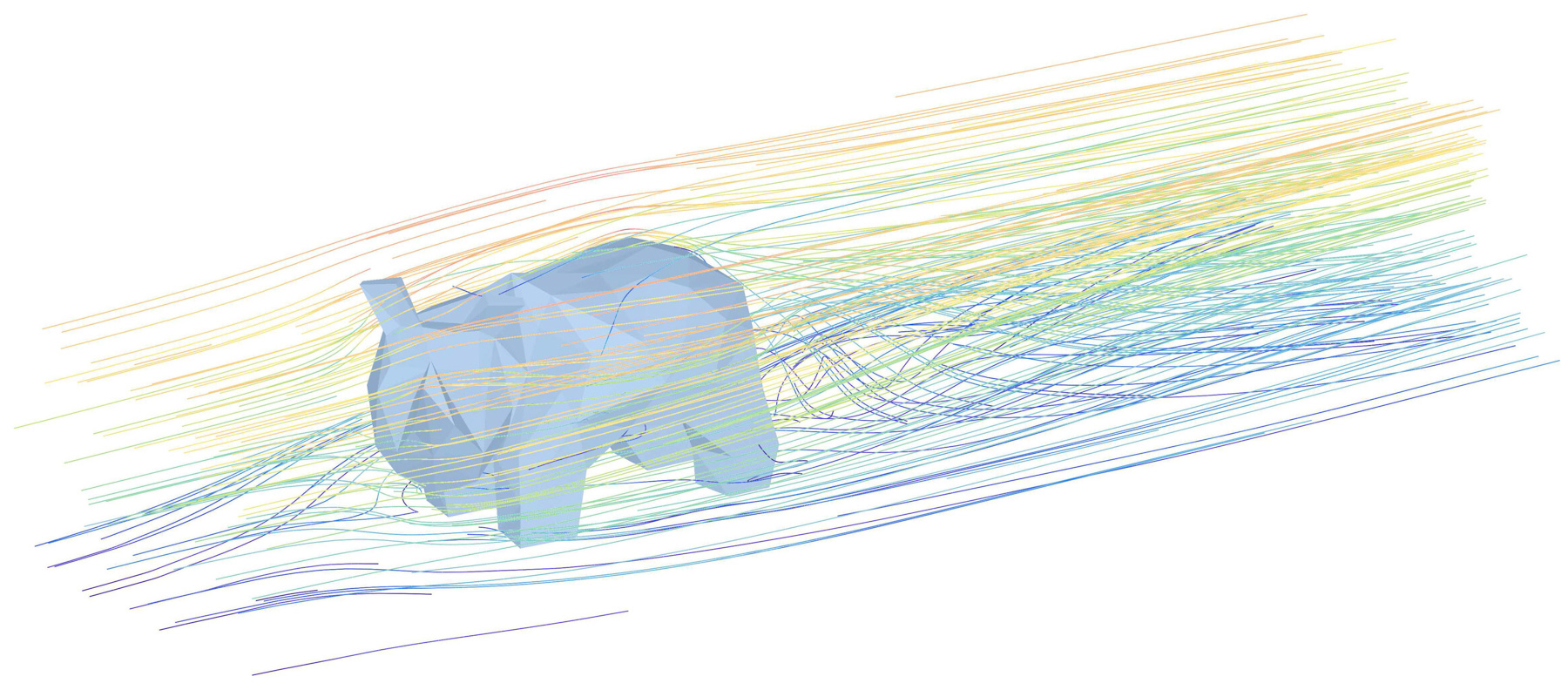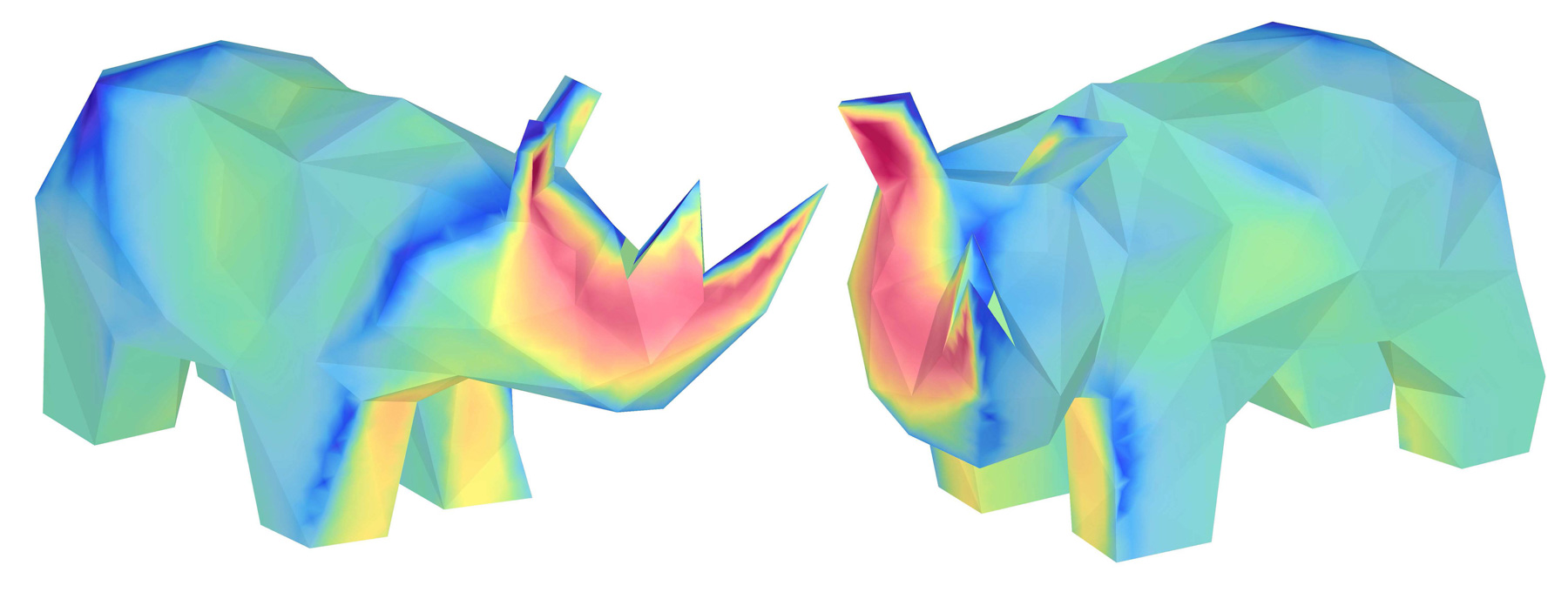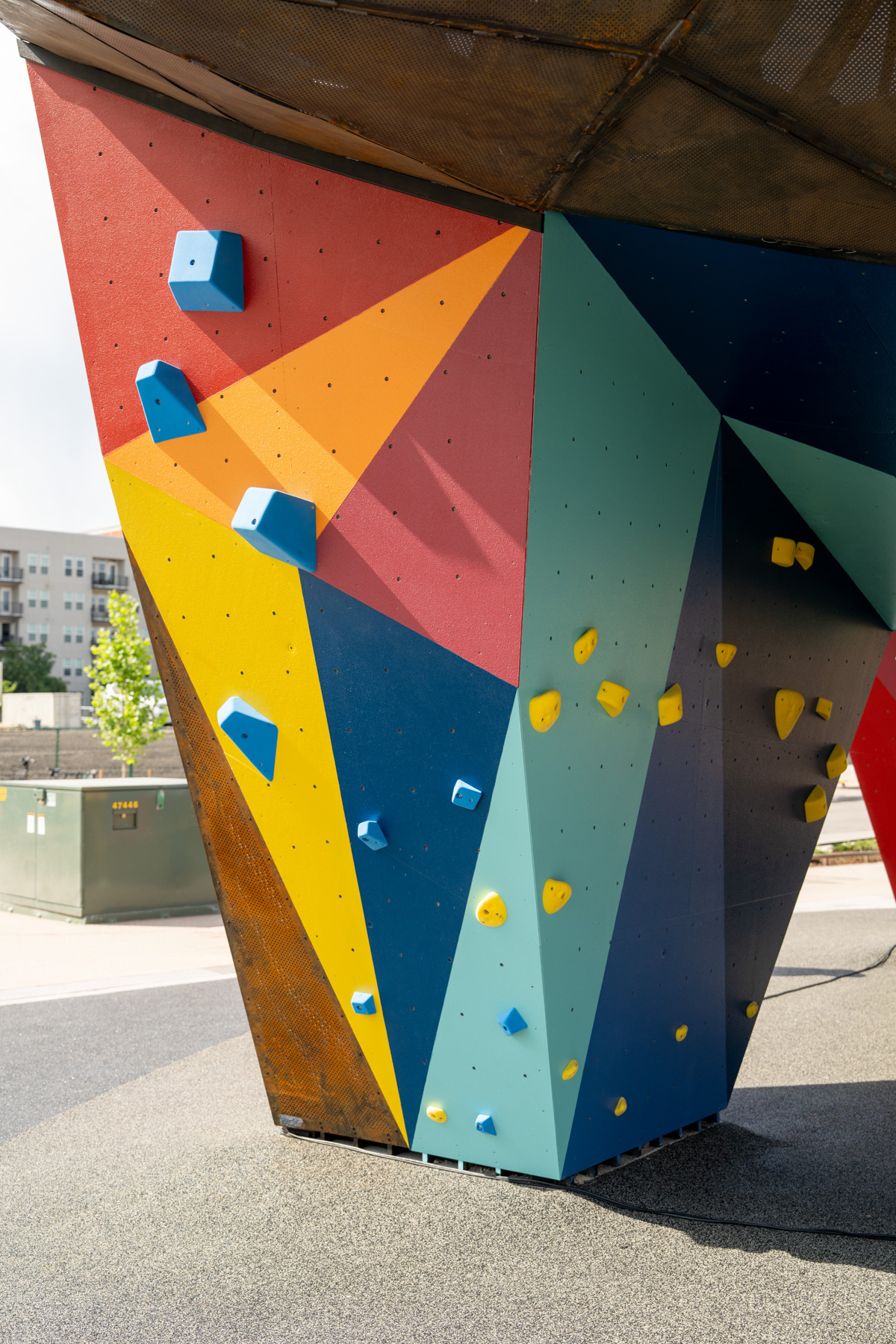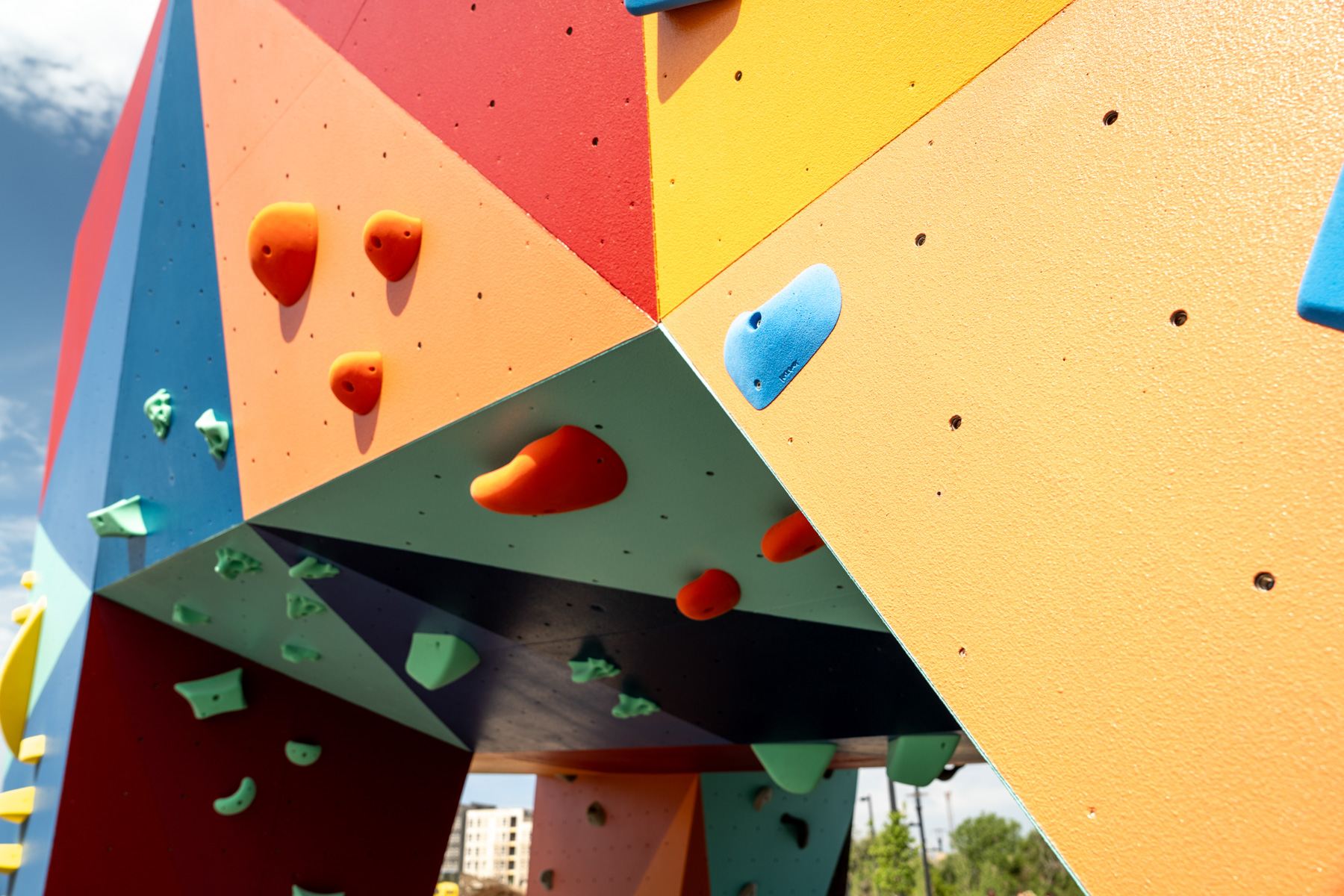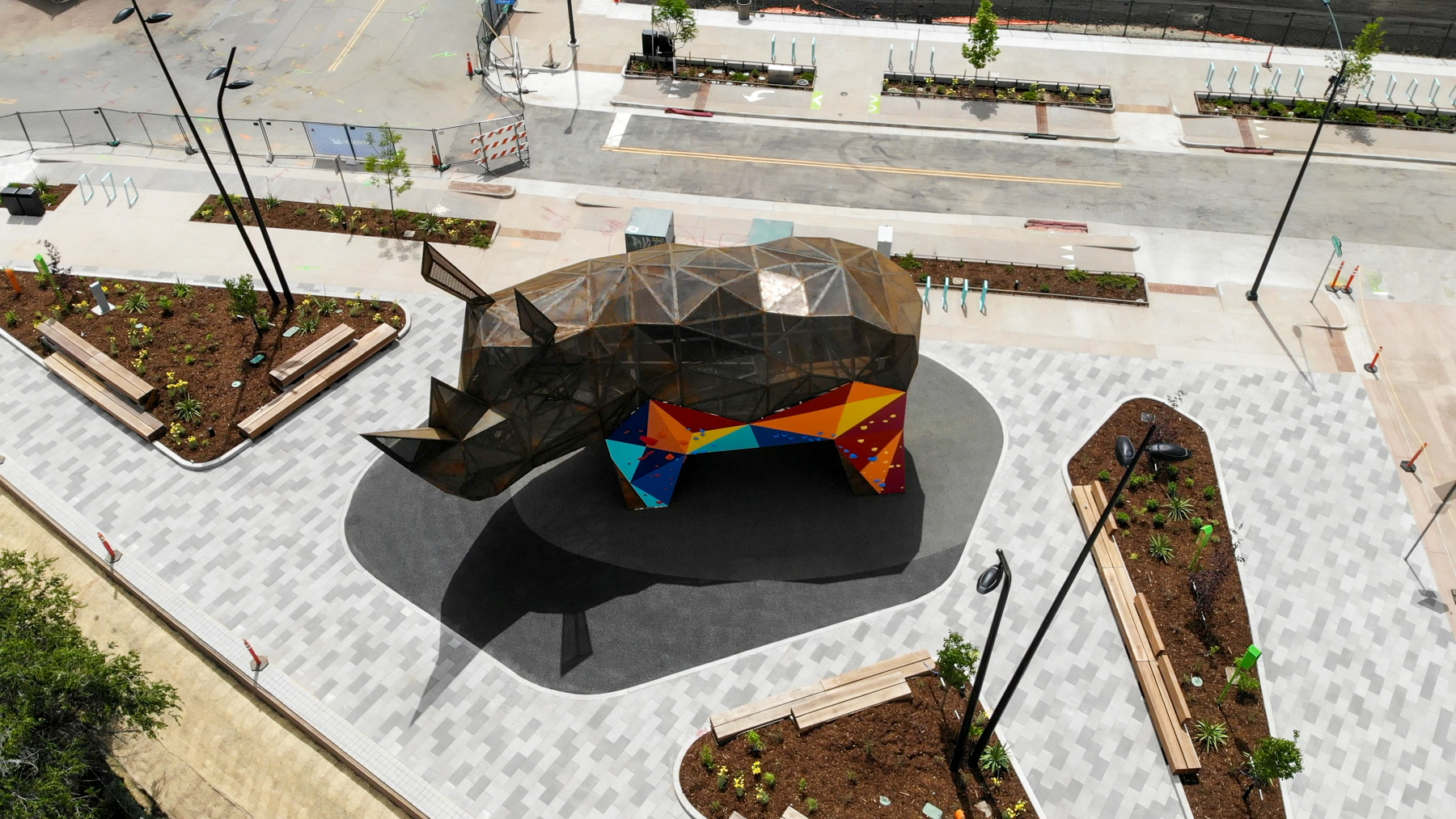When Denver-based developers Golub Capital and Formativ and architect Sasaki Design began planning their South Platte River revitalization north of the Colorado Rockies Ballpark, they envisioned an interactive play structure to rival Blucifer, the cast-fiberglass mustang at Denver International Airport. The River North Arts District (RiNo), never hesitant to lean into its namesake, inspired the idea of a giant rhinoceros climbing structure. The developers sought a local team for design, fabrication, and installation. JunoWorks, the fabricator of the district’s iconic Corten steel signs featuring rhinos and birds, was the natural choice.
The rhino’s complex geometry and scale created immediate design and fabrication challenges as the system was too large to fabricate in one piece and ship to site. An HSS-steel platform moment frame forms the primary structural system that transfers loads to the foundation while supporting the colorful climbing surfaces on the legs and belly developed in coordination with Eldorado Climbing Walls. Above the platform, an HSS rib frame provides the scaffold for the rhino’s skin surface.
The skin surface consists of a Corten structural-steel facet frame clad with perforated Corten steel plates. Custom plate tee-sections create a faceted, triangulated truss rigid enough to draw load demand away from the plate surfaces and support their out-of-plane axis against bending and buckling. This allows the perforated plate to function primarily as a non-structural cladding that stiffens the facet frame for better performance but is not required for safety or stability.
Special components such as the ears and horn deviated from the facet frame truss system and required unique detailing considerations. While the facet frame alone could not support these large protrusions, it was integrated with the HSS rib frame to provide sufficient support without inducing concentrated moments into the thin skin truss. Installation also required access to the rhino’s internal cavity, making bolt access a pivotal element of the detailing process.
To evaluate the participation of multiple structural components, CRAFT employed several FEA packages, as no single package was appropriate for all elements. The HSS tube frame systems and tee-section facet frame were first analyzed in an isolated model to confirm that the perforated skin panels were not required to deliver structural demands into the foundation. However, because the perforated plates are fully welded to the facet frame tees, they inherently attract load. A full model, including both the structural steel frame and skin panels, was then used to assess potential force transfer through the skin, stiffness enhancement from the panels, and buckling performance with skin participation. Solid element models were applied to evaluate complex connection nodes and to capture localized behavior at key points in the system.
With hundreds of unique node configurations to detail and fabricate, JunoWorks developed its fabrication model in Rhino 3D, while CRAFT ran FEA evaluations directly on that model throughout all stages of development using Grasshopper plugins. Coordination through traditional 2D drawings alone was not feasible, so the teams relied heavily on the shared 3D model to communicate design changes, detailing needs, and member clashes, ensuring the system was robust enough to withstand the wide range of weather and human interaction demands placed on the rhino climber. The fabrication and assembly sequence developed by JunoWorks was particularly critical for understanding load paths and weld requirements where prefabricated facet frame and skin panel assemblies were joined onsite.
Virtual wind tunnel studies were conducted to better understand the effects of wind on the rhino’s unique shape. The cantilevered, slightly askew head created loading scenarios difficult to capture with code-based methods. CRAFT used wind tunnel software to apply simulated loads directly to the structural FEA model, ensuring adequate performance during windstorms.
The ears and horn were designed for ultimate wind loads consistent with an ASCE7 component-and-cladding evaluation so that connections back to the main structure accounted for localized peak pressures on the smaller, extruded volumes. The wind tunnel study also provided insight into comfort and human experience for visitors moving below and around the sculpture.
Fabrication and erection of the rhino were completed quickly with no RFIs required between the JunoWorks and CRAFT teams. Eldorado Climbing prefabricated the climbing surface system through coordination with the 3D fabrication model, enabling a similarly smooth installation. Final touches of colorful paint and climbing holds contrast with the industrial aesthetic of the Corten steel facet frame, brightening the public space while referencing RiNo’s historic factories. Through shared model collaboration and advanced digital design tools, the team successfully added another giant to Denver’s growing collection of animal-inspired structures.
PROJECT TEAM
Architect: Sasaki Design, Fabricator: JunoWorks, Climbing Walls: Eldorado Climbing Walls, Developers: Golub Capital, Formativ
